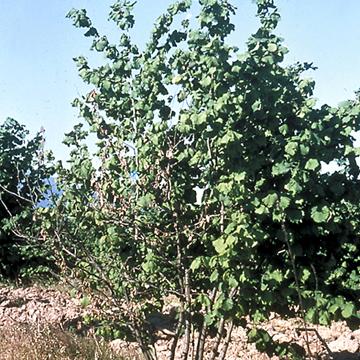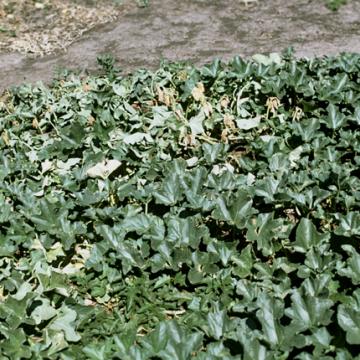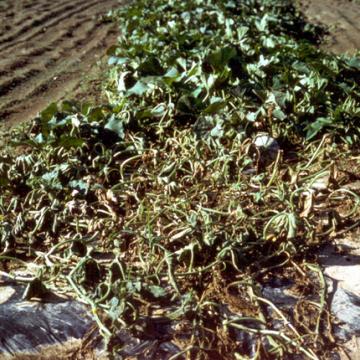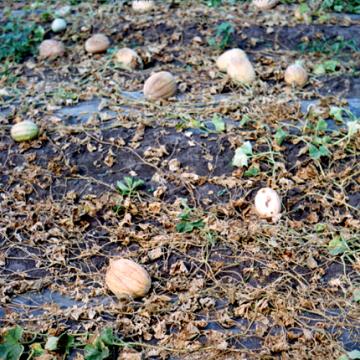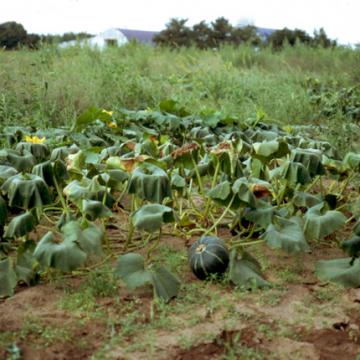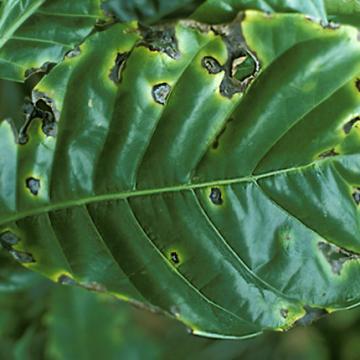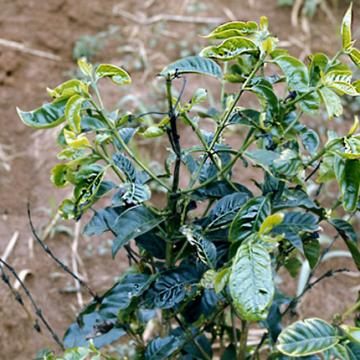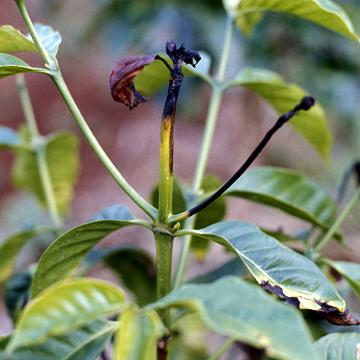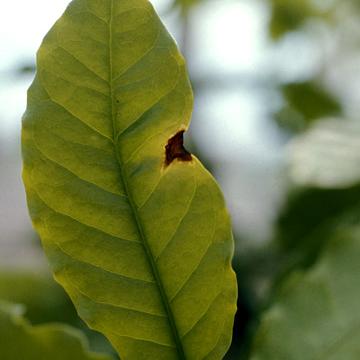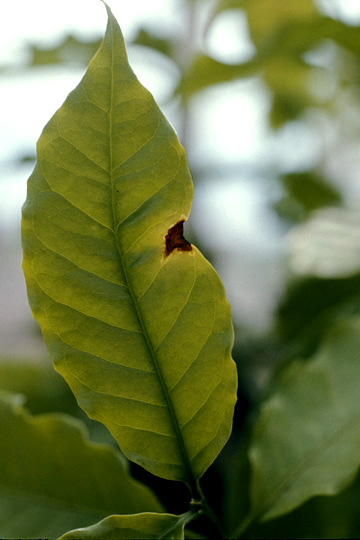DISEASE: Bacterial canker
HOST: Hazelnut
Primary symptoms are failure of buds to break and withering and death of new foliage in spring. Dead leaves remain attached to limbs after normal leaf fall.
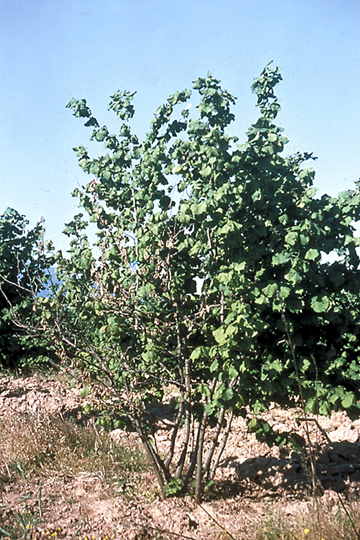
Bacterial canker | Hazelnut
DISEASE: Bacterial canker
HOST: Hazelnut (Corylus americana)
PATHOGEN: Pseudomonas syringae pv. avellanae
PATHOGEN SYNONYM: Pseudomonas avellanae
SOURCE: P. Psalidas
DISEASE: Bacterial wilt
HOST: Cantaloupe
Cantaloupe field with severe destruction from bacterial wilt (left), less on right.
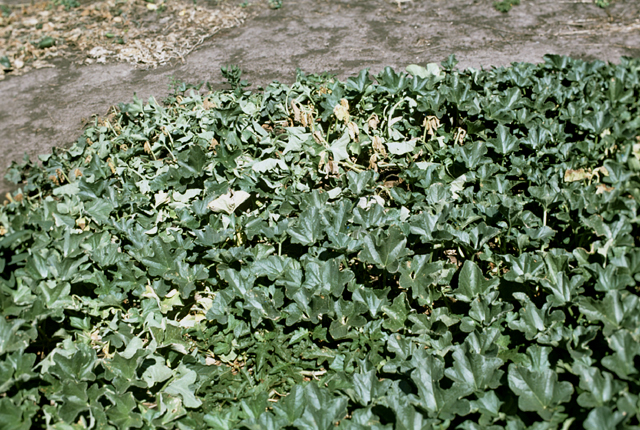
Bacterial wilt | Cantaloupe
DISEASE: Bacterial wilt
HOST: Cantaloupe (Cucumis melo var. cantalupensis)
PATHOGEN: Erwinia tracheiphila
SOURCE: L. Claflin
DISEASE: Bacterial wilt
HOST: Muskmelon
Severely diseased plants as noted by dying runners.
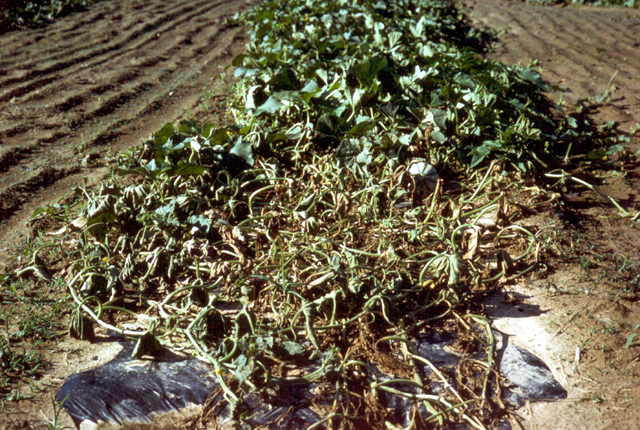
Bacterial wilt | Muskmelon
DISEASE: Bacterial wilt
HOST: Muskmelon (Cucumis melo)
PATHOGEN: Erwinia tracheiphila
SOURCE: M. Shurtleff
DISEASE: Bacterial wilt
HOST: Muskmelon
Wilt-devastated muskmelon field.
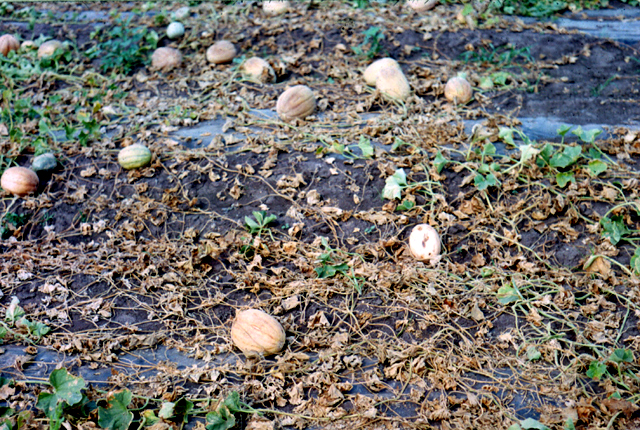
Bacterial wilt | Muskmelon
DISEASE: Bacterial wilt
HOST: Muskmelon (Cucumis melo)
PATHOGEN: Erwinia tracheiphila
SOURCE: M. Shurtleff
DISEASE: Bacterial wilt
HOST: Squash
Field with severe symptoms of wilt. Foliage often is chlorotic and leaf margins may be chlorotic and necrotic before plant death. Bacterial ooze may be seen streaming from the xylem when infected stems are cut.
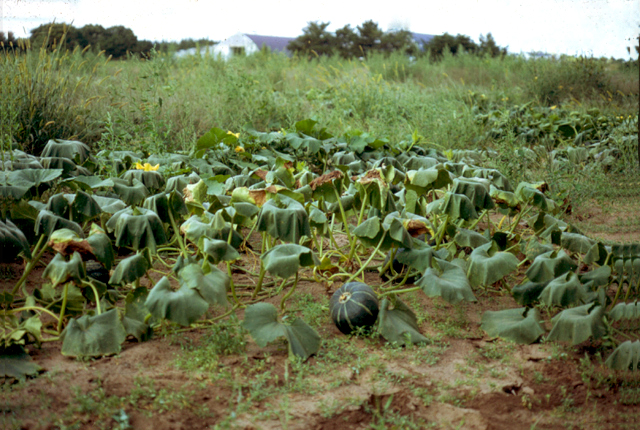
Bacterial wilt | Squash
DISEASE: Bacterial wilt
HOST: Squash (Cucurbita maxima)
PATHOGEN: Erwinia tracheiphila
SOURCE: B. Jacobsen, M. Shurtleff
DISEASE: Halo blight
HOST: Coffee
Leaf with blackish lesions surrounded by yellow halos.
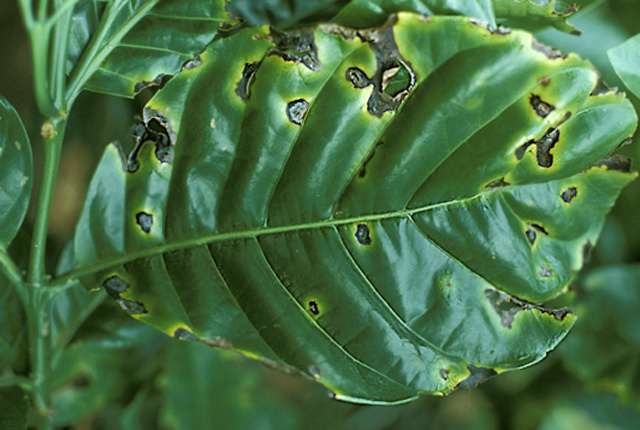
Halo blight | Coffee
DISEASE: Halo blight
HOST: Coffee (Coffea dewevrei)
PATHOGEN: Pseudomonas syringae pv. garcae
SOURCE: S. Mohan
DISEASE: Halo blight
HOST: Coffee
Young blighted coffee plant.
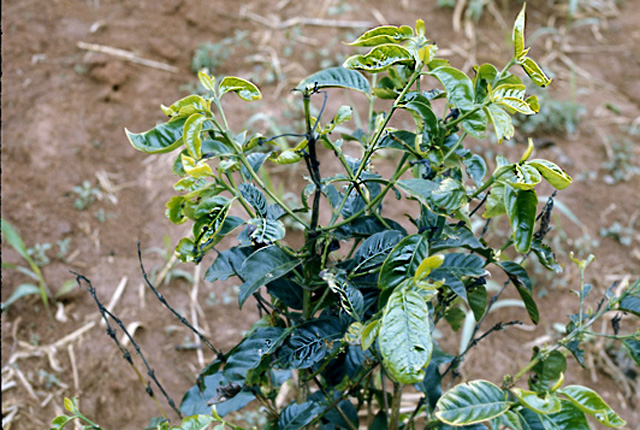
Halo blight | Coffee
DISEASE: Halo blight
HOST: Coffee (Coffea dewevrei)
PATHOGEN: Pseudomonas syringae pv. garcae
SOURCE: S. Mohan
DISEASE: Halo blight
HOST: Coffee
Stem blight stage of disease.
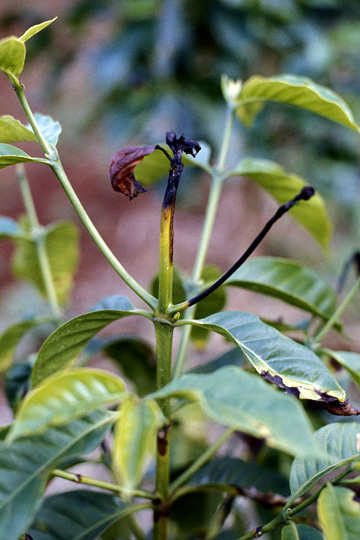
Halo blight | Coffee
DISEASE: Halo blight
HOST: Coffee (Coffea dewevrei)
PATHOGEN: Pseudomonas syringae pv. garcae
SOURCE: S. Mohan


